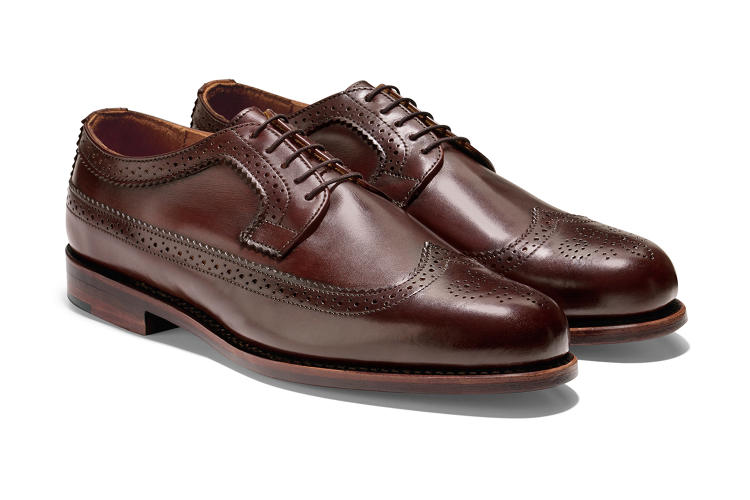Cole Haan Highlights American Shoemaking With Its New Collection
Today, Cole Haan unveils a new collection of leather loafers and oxfords that are entirely made in the small town of Lewiston in Maine. It has partnered with five expert leatherworkers who make each pair by hand, a process that takes more than 24 hours. It’s part of the company’s strategy to tap into its long history of artisanal craftsmanship.
Given that most shoes in this country are made in places like China, India, and Indonesia, it’s sometimes hard to imagine that the U.S. was once known for its shoemakers. In the 1800s, Maine was abuzz with workshops full of craftsmen who made some of the finest leather shoes in the world. Freeport alone had over 15 shoe factories. But as the forces of globalization shifted manufacturing overseas, they were shuttered one by one.
Cole Haan was founded in Chicago in 1928, when America was still known for its shoemaking prowess. It eventually moved production to Maine, where it could tap into local experts. This project is an effort to bring to the fore the brand’s long history in this industry. “We get to bring forward all the wisdom we’ve collected along the way, and that wisdom comes in the form of beautiful crafted products,” says Dave Maddocks, Cole Haan’s CMO and general manager of business development.

At the same time, Maddocks makes it clear that this Made in Maine collection isn’t part of a larger strategy of bringing all of its production to America. Given that the manufacturing process is so time- and labor-intensive, Cole Haan will only make a small batch of the shoes to cater to people who like the idea of investing in high-quality, locally made products. The company promises that these shoes, if well cared for, will last a lifetime. (The men and women’s loafers cost $325 and the men’s oxfords cost $400.) “This is not so much about us trying to make a big statement as it is about us wanting to serve our customers,” he says.
Over the last few years, the brand has been focusing heavily on innovation. Last year, it opened a Global Innovation Center, packed with high-tech testing and 3D modeling machines. It has recruited a team with expertise in industrial design, biomechanics, material science, and engineering, to find ways to push the boundaries of shoemaking. This month, it launched the GrandRevolution line, introducing into men’s oxfords and women’s pumps technologies ordinarily found in sneakers: cushioning, flexibility, lightness, and breathability. (We describe the process of creating them in our current magazine issue.)

But in the midst of all of this fast-paced technology, Cole Haan is working to preserve its expertise in slow, deliberate craftsmanship. The company has several shoemaking veterans on staff with an average of 30 years of experience each. The Made in Maine initiative brings more experts to the brand. “We did this (initiative) to say that these time-honored techniques and knowledge are safe and sound at Cole Haan,” Maddocks says.
Maddocks describes the interesting interactions that happen when the traditional and futuristic approaches to shoemaking come together. Industrial designers, for instance, are trained to think about things like fusing together different materials, while third generation leather tanning experts can talk for hours about how to select the right hide and burnish the leather. “When you pair those two people in a room, it’s really fun to watch,” he says. “You’re sure to get some new combination of ideas.”
Click through to see pictures of the Cole Haan’s Made in Maine collection and manufacturing process.











Fast Company , Read Full Story
(21)














